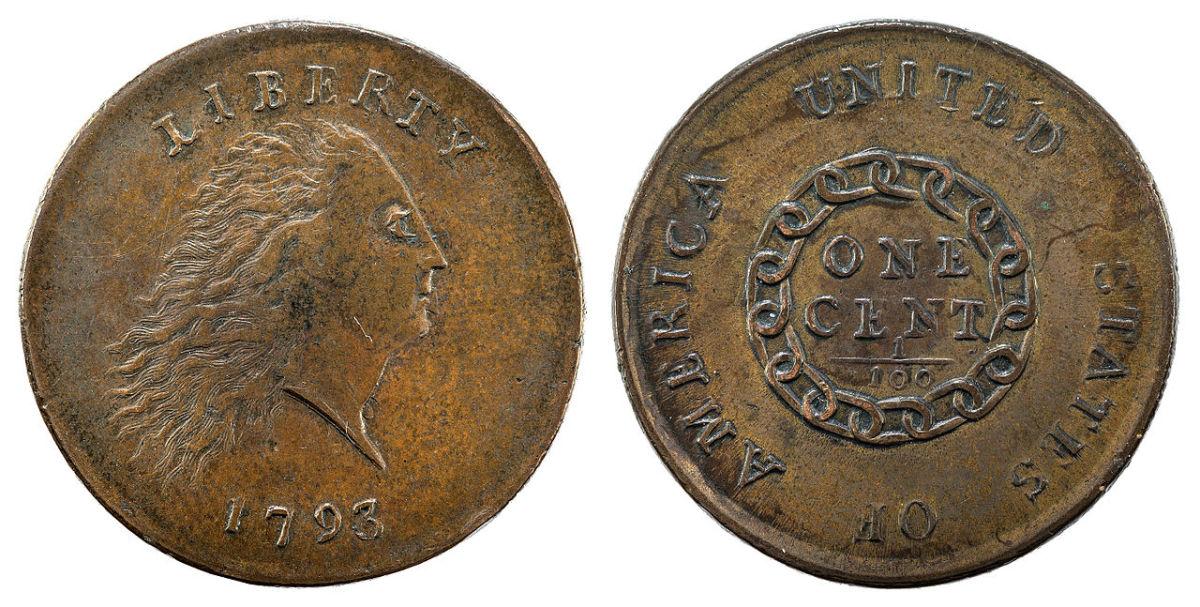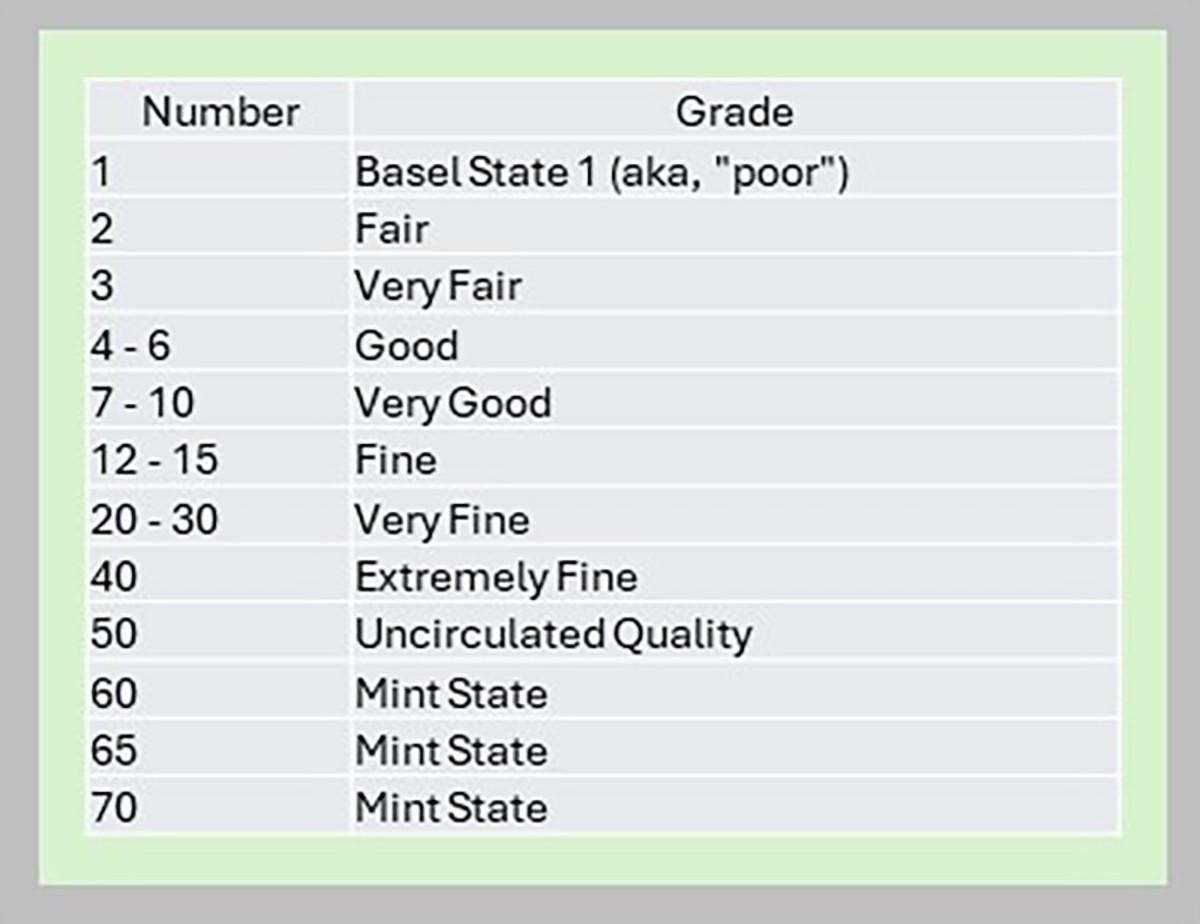- Coins
- Sports
- Cars
- Military
- Antiques
- Americana
- Antique Advertising
- Art
- Banks
- Books
- Bottles
- Clocks & Watches
- Coca-Cola
- Comic Books & Art
- Contemporary Collectibles
- Dolls
- Ephemera
- Folk Art
- Furniture
- Glass & Ceramics
- Hardware
- Holidays
- Jewelry
- Kitchen
- Lighting
- Luxury Items
- Movies Entertainment
- Music
- Petroliana
- Photography
- Postcards & Photography
- Posters (Movie/Music/Travel)
- Pottery & Porcelain
- Silver
- Tools
- Toys & Games
- Video Games
- Vintage Fashion
- Records
- Articles
- Events
The Sheldon Coin Grading Scale
Tips and tricks to make your hobby
more fulfilling, exciting and fun.
more fulfilling, exciting and fun.

Whether you are a seasoned collector or brand-new to the hobby, the history surrounding the current coin grading system is fascinating. The information it contains allows collectors to know exactly what quality they should expect to find.
The Sheldon Coin Grading Scale is a system used to assess the quality of coins in numismatics. It was developed by Dr. William Herbert Sheldon in the late 1940s and is still used today. The system assigns a numerical grade ranging from 1 to 70 based on a coin’s overall condition.
Dr. Sheldon first presented the scale in his work “Early American Cents, 1793–1814: A Quantitative Scale for Condition.” He initially designed the system to grade Large cents. The scale has 70 points, each representing a specific condition.

Example of an Early American Cent – the coins that inspired Sheldon to create a more precise grading scale.
US Mint (coin), National Numismatic Collection (photograph by Jaclyn Nash) – National Numismatic Collection, National Museum of American History, Public Domain
While the original scale was helpful in determining coin quality, it left a number of unanswered questions, such as what is the difference between a Fine 12 and a Fine 14, a Very Fine 23 and 25, or a Mint 60 and Mint 65?
Although the original Sheldon scale had become dated by the early 1950s, it wasn’t until the 1970s that the American Numismatic Association updated and adapted the scale to be used for all U.S. coins. The scale used today for coin grading is a modified Sheldon scale, with additions, deletions, and modifications that consider elements like wear, planchet quality, and design features. The scale also covers proof and uncirculated coins.
It is worth noting that certain types of early American coins were nearly always weakly struck in places. Since there may not be a perfect coin for the variety in some circumstances, this does not lower the grade of these coins. Planchet quality problems are common in early coins, and their severity and the state of the market might affect other coins’ grades.
Most grading agencies, like the NGC and PCGS, now use the modified Sheldon Scale to give all coin specimens standardized ratings. Most precious metals and coin dealers, as well as collectors worldwide, refer to the scale when listing quality standards. The letters preceding the scale, which goes from 1 to 70, represent the coin’s strike type.
The current scale is divided into two sections. Points from 1 through 58 grade circulated coins, while points 60 through 70 are reserved for uncirculated coins or Mint State. Additionally, some numbers are skipped.
The amended scale below features the points as follows: Grade number—Grade—Grade Code, with the criteria explained.
1 – Poor – PO
Most grade 1 coins tend to be worn smooth, but you can see the date, and perhaps even the type and mintmark
2 – Fair – FR
Some details are visible, but most of the coin is worn smooth on both sides.
3 – About Good – AG
The coin may be heavily worn, but the lettering is still readable. The date and design are worn smooth.
4 – Good – G, G4
It may be faint in certain areas of the coin, but the design is still visible. The rims are slightly worn. Peripheral lettering is almost fully visible. Parts of the coin are worn flat.
6 – Choice Good – G+, G6
The peripheral lettering is fully visible, and the rims are complete.
8 – Very Good – VG, VG8
Some details are visible. Two to three of the letters of the word LIBERTY are visible. The rims are complete.
10 – Choice Very Good – VG+, VG10
Most of the design details are worn flat, though most of the lettering remains readable. Five or six letters of the word LIBERTY are visible.
12 – Fine – F, F12
Half of the coin’s detail is worn flat, but the lettering remains sharp and clear.
15 – Choice Fine – F+, F15
More than half of the coin’s detail is visible, and the lettering is sharp and clear.
20 – Very Fine – VF, VF20
Higher surface detail shows moderate wear.
25 – Very Fine – VF25
All lettering and design features are sharp and clear despite showing some surface wear.
30 – Choice Very Fine – Ch.VF, VF+, VF30
All lettering and major design features remain sharp despite light but even wear across the entire surface.
35 – Choice Very Fine -Ch.VF, VF+, VF35
Lettering and major features are sharp, the wear is light and even, and traces of mint luster may remain.
40 – Extremely Fine/Extra Fine – Ex. Fine, EF40, XF40
Coin features are sharp overall, with light wear visible at the highest points. Traces of mint luster may remain.
45 – Choice Extremely Fin – Ch. Ex. Fine, EF45, XF45
Details are sharp and feature slight wear at the highest points of the coin. Mint luster remains on the protected areas of the coin’s surface.
50 – About Uncirculated/Almost Uncirculated – AU, AU50
Traces of wear are visible on the highest points of the coin. More than half of the original mint luster remains.
53 – About Uncirculated/Almost Uncirculated – AU, AU53
Fewer traces of wear are visible on the highest points of the coin. More than half of the original mint luster remains.
55 – Choice About Uncirculated – Ch. AU, AU55
The coin’s details can be seen in full. Three-quarters of its original mint luster remains.
58 – Choice About Uncirculated – Ch. AU, AU58
Virtually all the original mint luster remains. Slight friction is visible on the coin’s highest points.
The remainder of the scale addresses coins that were minted for distribution but never circulated. Because they were never used in transactions, they should show no evidence of wear and remain in mint condition or “Mint State.”
60 – Mint State or Proof 60 – MS60, PR60
The coin is in mint condition but poorly struck. Contact marks (nicks) and other damage spots are present but none of it is due to wear.
61 – Mint State or Proof 61 – MS61, PR61
The coin displays an average but weak strike. The mint luster shows visible scuff marks, rim nicks, and other defects.
62 – Mint State or Proof 62 – MS60, PR62
The coin is of an average to below-average strike. Numerous marks are visible on its surface.
63 – Mint State or Proof 63 – MS63, PR63
The coin’s strike is average and features only a moderate number of marks.
64 – Mint State or Proof 64 – MS64, PR64
The strike is average to above average. There are marks scattered across the coin’s surface, although none of them are severe.
65 – Mint State or Proof 65 – MS65, PR65
The strike is above average. The surface marks are minor and are outside the coin’s focal areas.
66 – Mint State or Proof 66 – MS66, PR66
The coin has an above-average strike. The marks are fewer in number and are outside the focal areas.
67 – Mint State or Proof 67 – MS67, PR67
The coin has a sharp strike and full luster. Any imperfections that are noticeable without magnification do not detract from its aesthetic qualities.
68 – Mint State or Proof 68 – MS68, PR68
The coin has a sharp strike, full luster, and exceptional eye appeal. Its imperfections are few and barely visible.
69 – Mint State or Proof 69 – MS69, PR69
The coin has a sharp strike with full luster and exceptional eye appeal. Any imperfections are few and visible only under close inspection.
70 – Mint State or Proof 70 – MS70, PR70
The Mint State coin is perfectly minted. No imperfections are visible under 5x magnification.

